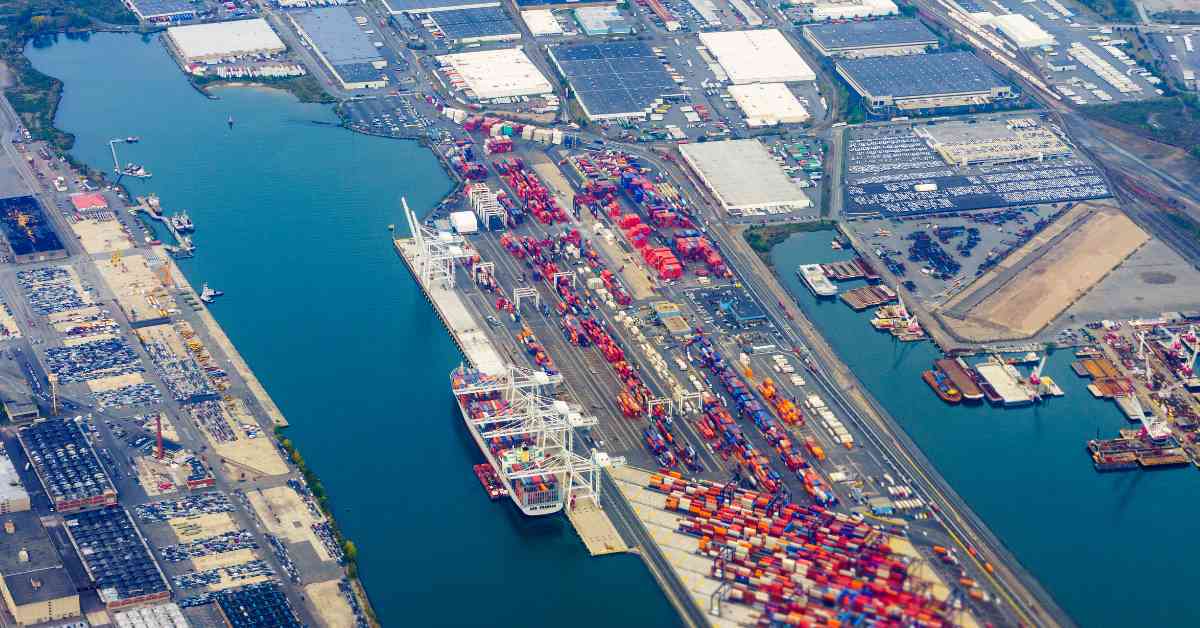Port Strike Stakes Ominous for US Supply Chains

The potential for widespread port strikes along the East Coast and Gulf of Mexico has sent shockwaves through the U.S. supply chain, threatening to disrupt a significant portion of the nation's shipping operations.
As of September 23, 2024, negotiations between the International Longshoremen's Association (ILA) and the United States Maritime Alliance (USMX) remain at an impasse, with the October 1 contract deadline rapidly approaching.
Scope and Scale of the Threat
The looming strike could affect up to 45,000 dockworkers at three dozen ports stretching from Maine to Texas.
These ports collectively handle about 60% of U.S. shipping traffic, making the potential impact on the supply chain substantial. The strike would be the first coast-wide dockworker strike on American shores since 1977, underscoring the gravity of the situation.

Immediate Effects and Industry Response
As the deadline approached, businesses and shipping companies began taking preemptive action.
There has been an 18% increase in freight movement to the West Coast, as companies attempt to reroute shipments and avoid potential East Coast delays. This shift, however, is creating its own set of challenges.
West Coast Congestion: The Ports of Los Angeles and Long Beach are experiencing significant congestion due to the sudden influx of redirected cargo. Trucking companies report longer wait times for drivers, with some being turned away entirely due to overcrowding.
Increased Costs: The rerouting of shipments, along with the need for additional storage and transportation, is driving up costs throughout the supply chain. These expenses are likely to be passed on to consumers, potentially fueling inflation.
Broader Economic Implications
The threat of a strike comes at a particularly vulnerable time for the U.S. economy, with potential consequences extending far beyond the immediate shipping industry.
Inflation Concerns: Business groups warn that port closures could have a devastating impact on inflation, affecting everything from food prices to the cost of electronics.
Holiday Season Disruptions: With the critical holiday shopping season approaching, retailers face the prospect of product shortages or the need for costly air freight shipments to maintain .
Ripple Effects: Given the interconnected nature of global commerce, even a short-term strike could have far-reaching consequences for industries worldwide, particularly those reliant on just-in-time inventory systems.
Historical Context and Potential Impact
The 2002 West Coast port lockout serves as a stark reminder of the potential consequences of such disruptions. That 11-day shutdown cost the U.S. economy over $1 billion per day, with effects lasting for months afterward. Experts warn that even a two-week strike in the current scenario could disrupt supply chains until 2025.
Preparedness and Contingency Planning
As the situation unfolds, various stakeholders are taking steps to mitigate potential losses.
Port Authorities: The Port Authority of New York and New Jersey, for example, is coordinating with supply chain partners to prepare for possible disruptions.
Businesses: Companies like Goya Foods have been actively preparing by increasing safety stock, shipping holiday items earlier than usual, and diversifying their ocean carriers.
Logistics Providers: Norfolk Southern Railway and other transportation companies are leveraging their networks and partnerships to minimize disruptions and ensure the continued flow of essential goods.
Ongoing Negotiations and Key Issues
The core of the dispute revolves around several key issues.
Wage increases: Concerns about automation and job security
Working conditions and benefits: Despite ongoing discussions, there has been little progress toward reaching an agreement, with both sides showing limited willingness to compromise.
Looking Ahead
As the October 1 deadline approaches, the situation remains fluid. The potential for a strike underscores the fragility of global supply chains and the critical role that port workers play in the U.S. economy.
While the immediate focus is on averting a work stoppage, the ongoing dispute highlights the need for long-term solutions to ensure the stability and efficiency of the nation's shipping infrastructure.
The coming days will be crucial as all parties involved work to find a resolution. The outcome of these negotiations will have far-reaching implications not only for the shipping industry but for the broader U.S. economy and global trade networks.

